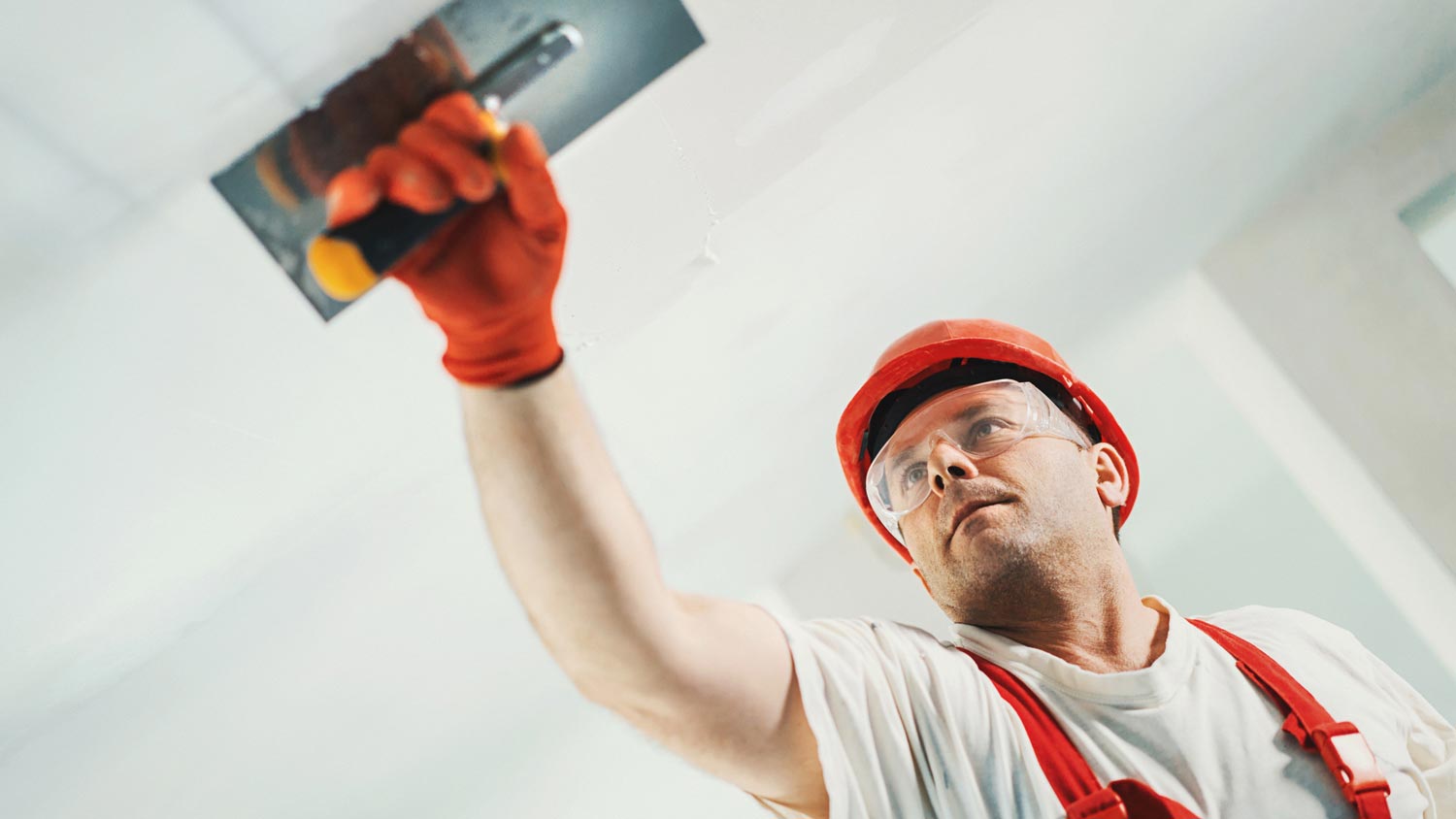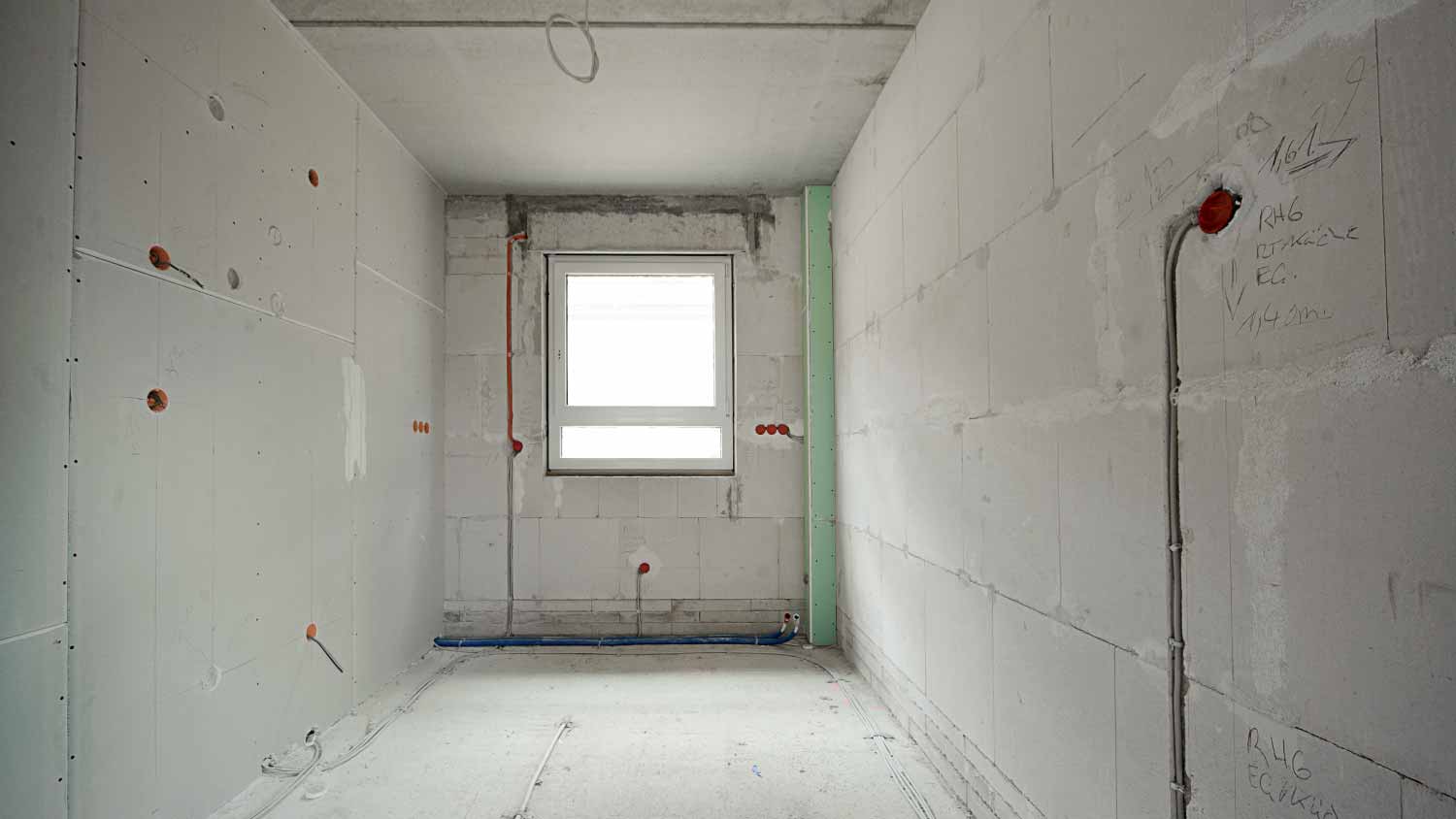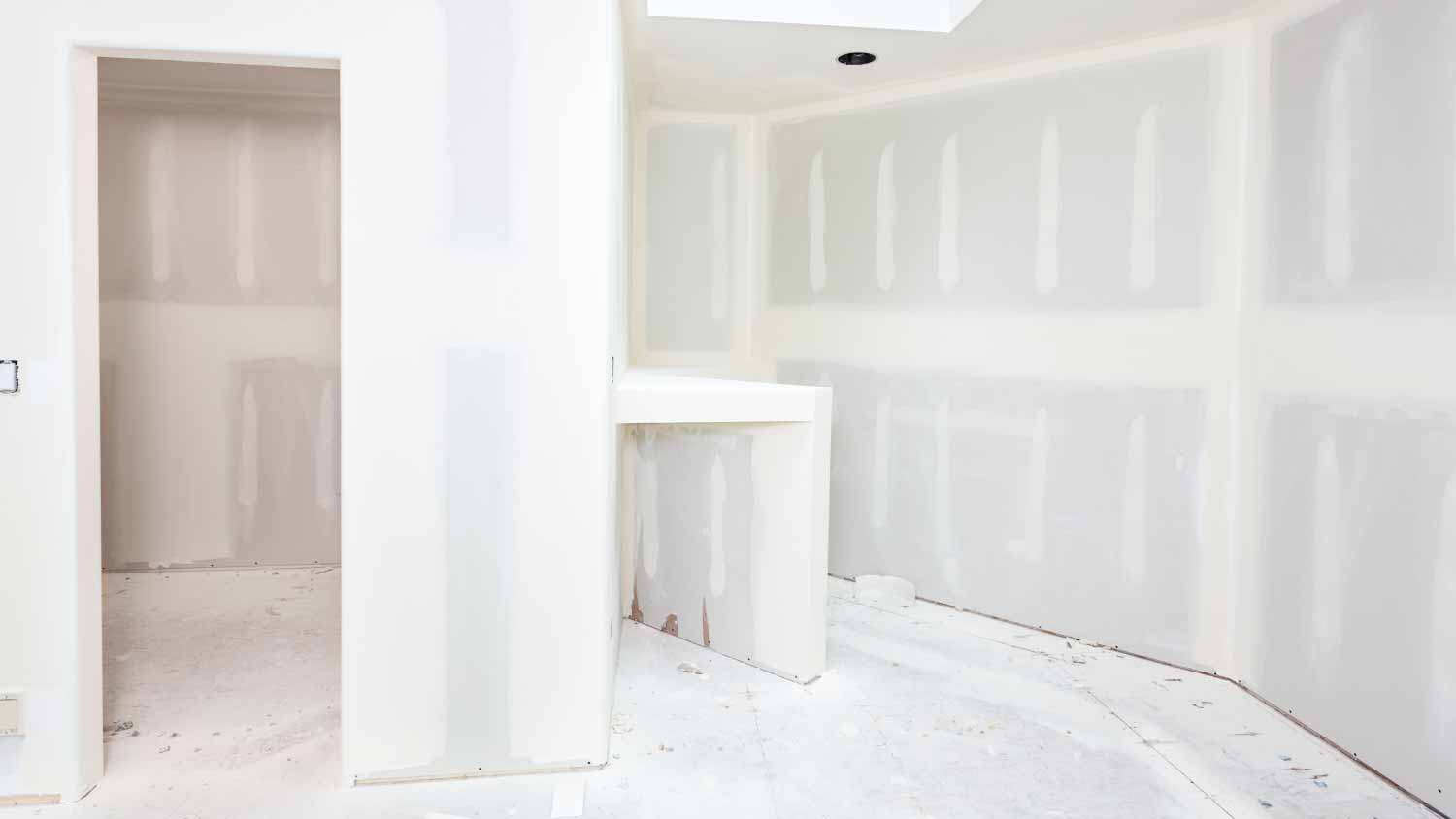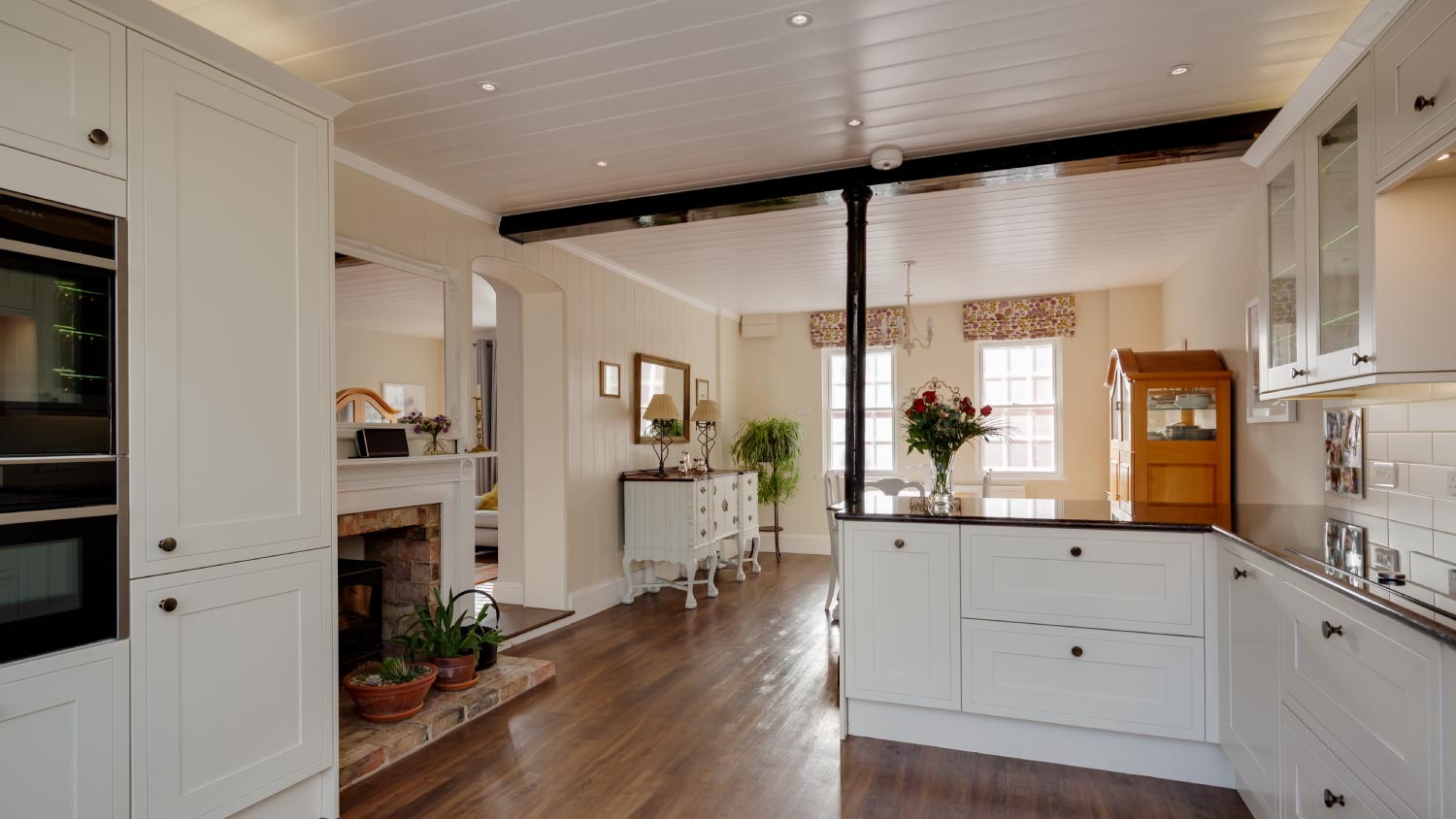
Skim coating drywall is a great alternative to replacement, and is often more affordable. Use this guide to estimate the cost to skim coat walls in your home.
Weigh your home's aesthetic options


Cement board boasts impressive durability and longevity.
For a smooth finish that offers a lot of customization, drywall is a great choice.
In wet areas in your home, cement board can reduce mold and mildew growth.
Two materials stand out as fundamental choices for creating walls and ceilings in homes: cement board and drywall. These two building materials, each with its own set of advantages and limitations, are essential components in countless construction projects. Whether you're a homeowner planning a renovation, considering materials for a new project, or simply looking to understand the best-suited material for your specific needs, read on to compare cement board versus drywall.
Two building materials that differ in composition and purpose are cement board and drywall. Cement board is made mostly of cement and is reinforced with fibers, giving it a strong and resistant quality against moisture, which is well-suited for damp areas such as kitchens and bathrooms.
Drywall, also known as gypsum board or sheetrock, is composed of gypsum plaster enclosed by paper and is lightweight and cost-effective to be used for interior walls and ceilings. However, its water-resistant properties are not as robust as cement board and may require additional protection in areas that are prone to moisture.

Cement board is composed of cement, sand, and fiber reinforcement, typically cellulose or fiberglass. It is designed for its exceptional durability and resistance to moisture, making it ideal for use in wet areas such as bathrooms, kitchens, and outdoor spaces. The material is commonly used as a substrate for tile and stone installations, providing a stable and moisture-resistant surface for these finishes.
| Pros | Cons |
|---|---|
| Durable | Heavy |
| Moisture resistant | Costly |
| Termite resistant | Difficult to cut |
| Stable surface | Messy |
Best for:
Environments and rooms where moisture is a concern
Tile or stone installations
Exterior siding, especially in areas with harsh weather conditions
Cement board exhibits exceptional durability, withstanding substantial loads without any risk of sagging or warping, which maintains its structural integrity even in challenging environments. This attribute ensures that it serves as a stable surface for tile and stone installations, protecting against cracks and damage over time. Cement board also boasts versatility, making it suitable for both indoor and outdoor projects, such as walls, floors, and countertops.
What makes cement board exceptional is its impressive moisture resistance, making it an ideal choice for areas that are highly humid, including bathrooms and kitchens. Additionally, it is naturally resistant to mold and mildew, improving indoor air quality and creating a healthier living space.
Since cement board is non-combustible, it is an essential component of fire-rated assemblies, adding an extra layer of safety to buildings. Another way it offers peace of mind is with its termite-resistant properties, which is especially important in regions where wood-eating pests are prevalent.
The weight of cement board is a major concern during installation as it can create challenges. Due to its substantial heft, extra structural support is often required, making the installation process more labor-intensive and often best handled by a professional drywall installer. Cutting and shaping the material can be cumbersome and may require specialized tools and techniques, further complicating the installation.
On top of that, the use of cement board generates a significant amount of dust, making proper ventilation and protective gear essential for a safe environment.
Unlike other materials, such as drywall with added insulation, cement board has limited inherent insulation properties. This can affect its thermal performance in some applications. Additionally, installing cement board requires special corrosion-resistant fasteners, adding to the overall project cost, which is higher than that of drywall.
The rigid nature of cement board also makes it less suitable for use on curved or rounded surfaces, limiting its versatility in certain design scenarios.

Drywall is primarily used for creating interior walls and ceilings in residential and commercial buildings. The material is favored for its ease of installation, cost-effectiveness, and smooth, paint-ready surface. It provides a clean and uniform appearance to interior spaces and serves as a versatile substrate for various finishes, such as paint, wallpaper, or texture.
| Pros | Cons |
|---|---|
| Affordable | Moisture susceptible |
| Easy to install | Fragile |
| Smooth finish | Limited load-bearing |
| Versatile | Requires drywall mud |
Best for:
Homeowners seeking a cost-effective solution
Providing a smooth and even surface for paint or wallpaper
Creating custom architectural features
Drywall's affordability and widespread availability make it a cost-effective solution for interior wall and ceiling finishes. The ease of installation is a significant asset, as it simplifies the construction process, reduces labor costs, and shortens construction timelines. Once installed, drywall provides a smooth and consistent surface that is ready for painting or other finishes without the need for extensive preparation.
The material boasts fire-resistant properties that enhance building safety. Drywall can also serve as an effective sound insulation medium when paired with suitable insulation materials, making it suitable for projects where noise control is a priority.
Its versatility allows it to adapt to various architectural demands, including curved walls, arches, and decorative elements, providing designers and architects with creative flexibility. Drywall's repairability is a practical advantage as damaged sections can be easily patched and repainted, often at a lower cost than replacing an entire wall.
The most significant limitation of using drywall is its susceptibility to moisture. The material can suffer damage when exposed to water or high humidity, often necessitating replacement. This moisture can lead to mold growth on drywall, potentially impacting indoor air quality and posing health concerns. Drywall is not suitable for wet areas like bathrooms or kitchens unless adequately protected with waterproof materials, limiting its application in such spaces.
Drywall's relative fragility means it can be easily damaged by impacts or pressure, requiring careful handling and use. It also has limited load-bearing capacity and is not designed to support heavy items like shelves or substantial artwork.
The proper finishing of drywall joints and seams with joint compound and tape is a skilled and time-consuming process, adding complexity to the construction or renovation process.

Drywall has a better appearance than cement board due to its smooth and uniform surface that is ready for paint, wallpaper, or other finishes without extensive preparation. It provides a clean and polished look that is widely favored for interior wall and ceiling finishes.
Drywall can be easily textured, painted, wallpapered, or finished with various decorative techniques, providing a wide array of design possibilities to suit diverse interior aesthetics. Many types of drywall are more adaptable to custom architectural features, including curved walls and decorative elements, offering designers and architects creative flexibility.
Cement board offers superior durability as the material is specifically engineered to withstand heavy loads without sagging or warping, making it exceptionally robust and resilient. It is highly resistant to moisture, mold, and mildew, ensuring longevity in wet environments such as bathrooms and kitchens.
Drywall is widely available and cost-efficient, making it a budget-friendly choice for interior wall and ceiling finishes. Its ease of installation also contributes to cost savings by reducing labor expenses and construction time. On average, drywall installation cost ranges between $986 and $3,110.
Bundling services is the best way to save money on drywall installation, repair, and texturing. It’s also more convenient to get everything done by the same team. It’ll save you time, which, when you’re paying labor costs, will also save you money—plus, the results will be more consistent.
Drywall is known for its straightforward and relatively simple installation process. It is lightweight, making it easier to handle and transport, and can be quickly mounted with standard tools. The application of drywall involves taping and finishing joints with joint compound, which, although a skilled process, is a practice even DIYers can learn.
Drywall is known for its simplicity in patching and repairing damaged areas. Small holes, dents, or cracks in drywall can be easily filled with joint compound, sanded smooth, and then painted, often requiring minimal time and effort.
Cement board is known for its durability and resilience, which allows it to withstand heavy loads, moisture, and impacts over an extended period. When properly installed and maintained, cement board can endure for many decades without significant deterioration.
From average costs to expert advice, get all the answers you need to get your job done.

Skim coating drywall is a great alternative to replacement, and is often more affordable. Use this guide to estimate the cost to skim coat walls in your home.

Whether you’re trying to keep noise in or out, soundproofing materials are the way to go. Use this guide to see how much it costs to soundproof a room.

Installing beadboard ceilings is a great DIY project. Learn what to expect cost-wise from this project, whether removing or covering a popcorn ceiling.

Hanging drywall on a ceiling can be a tough project because the drywall is heavy, and you must lift it over head. Use this guide to learn how to hang drywall on a ceiling the right way.

Wondering how many coats of mud on drywall you need? Learn what affects the number and how to get a smooth, professional finish for any space.

Not sure what type of interior wall material to choose for your home? We’re breaking down the great debate between blueboard vs drywall. Read on to learn more.